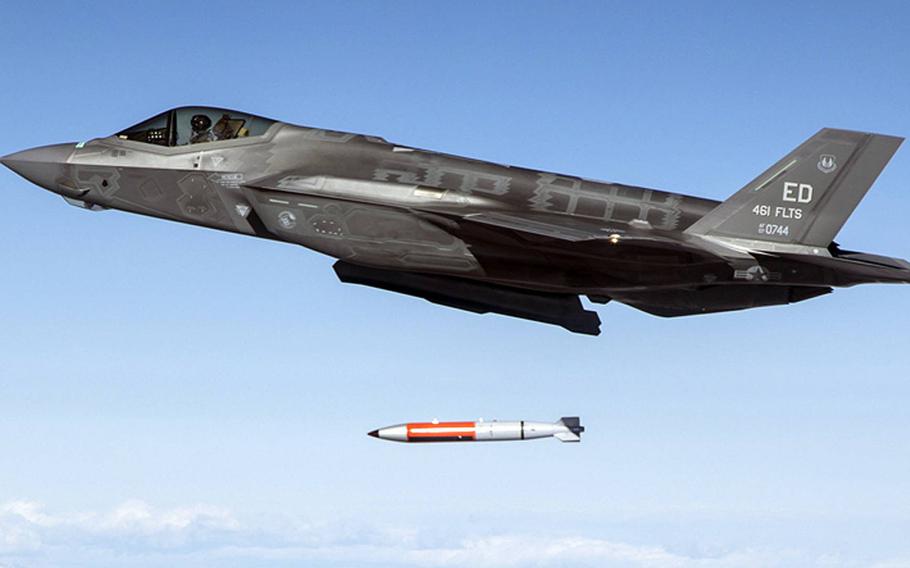
An F-35 Lightning II fighter jet releases an inert B61-12 bomb during a test in December 2021. The Pentagon said Friday, Oct. 27, 2023, that it’s seeking to develop a modern variant of the bomb, the B61-13. (Department of Defense/F-35 Joint Program Office)
WASHINGTON — The U.S. military is developing a modern version of the B61 nuclear gravity bomb, which has been a mainstay in its arsenal for decades, the Pentagon said Friday.
The U.S. has made several variants of the B61 in the last 50 years. The new version, the B61-13, would be built by the Department of Energy’s National Nuclear Security Administration, officials said. The Pentagon underscored the B61-13 is necessary to maintain readiness in a rapidly changing international climate but did not indicate when the weapon is expected to enter service.
“Today’s announcement is reflective of a changing security environment and growing threats from potential adversaries,” said John Plumb, the assistant secretary of defense for space policy. “The United States has a responsibility to continue to assess and field the capabilities we need to credibly deter and, if necessary, respond to strategic attacks and assure our allies.”
The new B61 nuclear bomb could be dropped by various modern aircraft, the Defense Department said, and would give future presidents “additional options against certain harder and large-area military targets.” The B61-13 would replace some of the B61-7 variants that are now in the U.S. nuclear stockpile and produce a larger explosion than the most recent version of the bomb — the B61-12, which has been in production since 2021.
Developing the new bomb supports the 2022 Nuclear Posture Review, which said other countries are expanding, modernizing and relying more on their nuclear capabilities, according to the Defense Department. The review called for new investments in U.S. deterrence efforts while at the same time seeking arms-control and other risk-reduction measures.
Developing the B61-13 ultimately will require congressional approval and authorization, the Pentagon said.
“The fielding of the B61-13 is not in response to any specific current event,” the Pentagon said. “It reflects an ongoing assessment of a changing security environment.”
The department said production of the new bombs, however, will not expand the U.S. arsenal.
“The number of B61-12s to be produced will be lowered by the same amount as the number of B61-13s produced,” it said.
Previous versions of the B61 were deliverable by several aircraft, including the B-1 Lancer, B-2 Spirit, B-52 Stratofortress and F/A-18 Hornet fighter jet. It wasn’t initially clear which aircraft will deploy the B61-13, but officials said the new weapon will help retire older legacy weapons such as the B83 bomb, which has been in service for 40 years.
The United States has about 5,200 nuclear weapons in its stockpile, and Russia has almost 5,900, according to the Federation of American Scientists, a nonprofit Washington think tank that studies global security. Both totals are dramatically lower than the number each nation had at their peak — 31,000 for the U.S. in the late 1960s, and 41,000 for Russia in the mid-1980s.
Earlier this month, the U.N. Disarmament and International Security Committee cautioned the threat of nuclear war will persist for as long as countries keep stockpiling the weapons. One committee representative said the mere existence of nuclear weapons “creates a temptation and risk of use.”